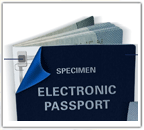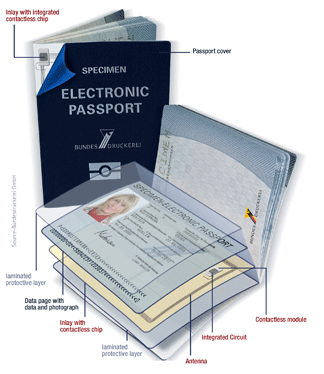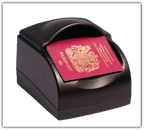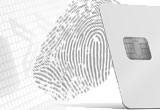U.S. issues first e-passports to diplomats, citizen issuance to start later in ’06
20 April, 2006
category: Biometrics, Government, Library

By Erik Peterson, Contributing Editor, AVISIAN Publishing
The United States government plans to begin issuing e-passports – a new version of the passport containing a contactless chip and biometric security – to the American public at the end of 2006. This announcement accompanies the commencement of a mid-January 2006 pilot program in which diplomats were issued the new passports.
The biometric requirements for the new e-passports originate from the Enhanced Security and Visa Entry Reform Act of 2002 (Border Security Act), passed by the U.S. Congress in the aftermath of the 2001 terrorist attacks. The law stipulates new rules for countries in the Visa Waiver Program, the initiative that allows citizens of 27 countries to visit the U.S. for business or pleasure for up to 90 days without a visa. Under the new law, the governments of these countries must provide their citizens with secure, machine-readable, and biometrics-enabled e-passports that are compliant with International Civil Aviation Organization (ICAO) e-passport standards.
Originally, the United States wanted the new e-passport requirements to be met by October 26, 2004, but the deadline was extended first to 2005, then again to October 26, 2006.
 The ICAO worldwide e-passport standards state that facial, iris, and fingerprint biometric technologies are to be used as the new criteria in securing traveler identification. The ICAO standards also mandate the use of contactless, machine-readable technology. A February 17, 2006 U.S. Department of State press release explained the new technologies of the e-passport and attempted to alleviate security and convenience concerns: “The new passport combines face recognition and contactless chip technology. The chip, embedded in the cover of the passport, holds the same information that is printed in the passport: name, date of birth, gender, place of birth, dates of passport issuance and expiration, passport number, and photo image of the bearer. Along with basic information included on current paper passports, e-passports will introduce a digital photograph. Previously issued passports without electronic chips will remain valid until their expiration dates.”
The ICAO worldwide e-passport standards state that facial, iris, and fingerprint biometric technologies are to be used as the new criteria in securing traveler identification. The ICAO standards also mandate the use of contactless, machine-readable technology. A February 17, 2006 U.S. Department of State press release explained the new technologies of the e-passport and attempted to alleviate security and convenience concerns: “The new passport combines face recognition and contactless chip technology. The chip, embedded in the cover of the passport, holds the same information that is printed in the passport: name, date of birth, gender, place of birth, dates of passport issuance and expiration, passport number, and photo image of the bearer. Along with basic information included on current paper passports, e-passports will introduce a digital photograph. Previously issued passports without electronic chips will remain valid until their expiration dates.”
Each step closer to e-passport reality, however, only seems to fuel those voicing security concerns. Groups such as the American Civil Liberties Union (ACLU) have voiced concerns that RFID-enabled e-passports have the potential to be global tracking devices that can be used to spy on citizens around the world.
Just ten days after the press release, Laura Tischler, a spokeswoman for the State Department Consular Affairs, stated in an interview, “The information contained on the integrated circuit embedded in the passport will not provide a means to track U.S. citizens. This information will be used only in identity verification at ports of entry during travel.” An e-passport with face-recognition technology will make it “incredibly difficult for someone else to use your passport,” Tischler added.
And Department of State release attempts to address these concerns, stating, “the Department has incorporated an anti-skimming device in the passport’s front cover. The Department also included basic access control (BAC) technology to prevent skimming and eavesdropping. The anti-skimming device and the BAC technology, when taken together, will mitigate unauthorized reading of the e-passport.”
Some disagree with the Department of State’s position. A Dutch security firm, Riscure, recently intercepted information being transferred from a contactless e-passport to a machine reader. According to Riscure, in only two hours they were able to decode the captured information and read the contents of the e-passport.
Despite security concerns, the United States is determined to move ahead with the e-passports. Manufacturers are gearing up as well. Current e-passports use chips from Infineon Technologies North America Corporation that are embedded in the passport cover. A metal shield prevents skimming data while the passport is being read. To date, the Infineon technology is the only approved solution for U.S. passport use. The National Institutes of Standards and Technology is still testing products from Axalto, Inc., On Track Innovations Ltd., and ASK.




